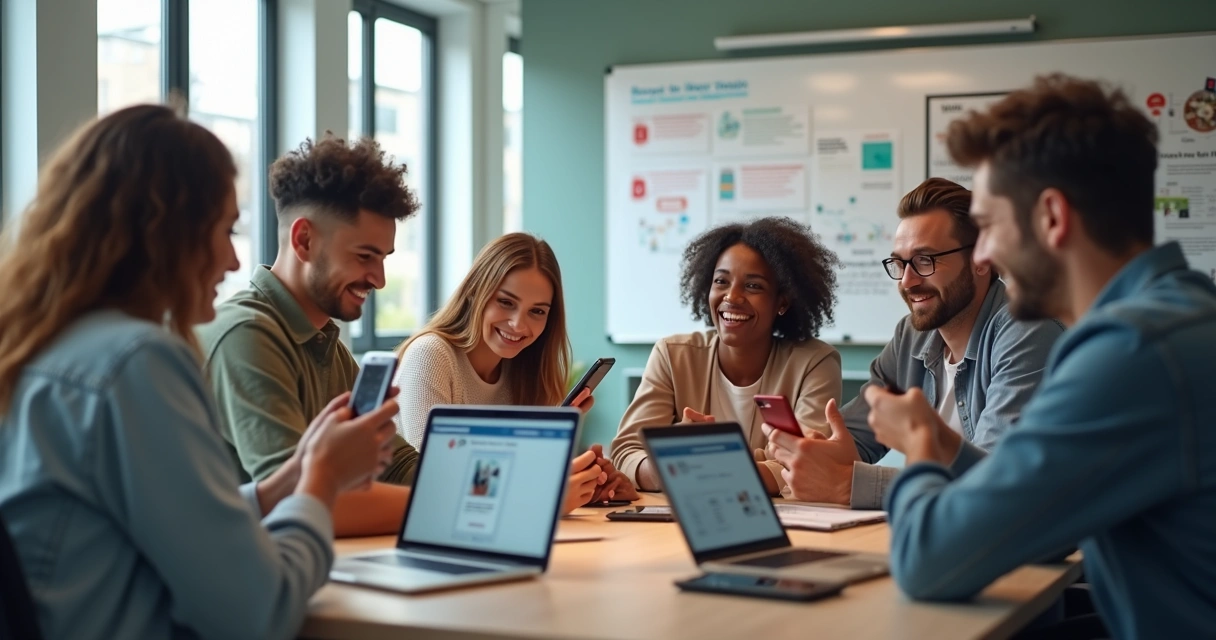Video user-generated content, or simply UGC video, is changing the way brands communicate on social networks. The approach feels personal, raw, and inviting in a world crowded with polished ads. Viewers now scroll past overproduced commercials. But a simple clip from a real customer? That grabs attention. There’s power in that authenticity.
This guide walks through what UGC video means, why it works, how to use it, and the practical sides no brand can ignore. You’ll get actionable tips—nothing too abstract. The aim is to help you begin using UGC video the smart way, whether you work in a small marketing team, a hungry agency, or a giant e-commerce operation. The process is easier than it seems, especially with modern tech like Automads making video creative simpler and quicker.
What is UGC video and why does it matter?
UGC stands for user-generated content. When talking about video for social media ads, UGC video refers to short clips created by everyday consumers—not professional marketers or production studios. These videos typically show people using a product, reacting to it, reviewing it, or even just talking about their genuine experience. What you see is a glimpse into real life, not a scripted story.
Why does this matter for brands? Because social media isn’t about glossy perfection anymore. Consumers crave stories from people they relate to. They trust ordinary folks more than businesses. There’s plenty of research (and plain old common sense) showing that someone who looks and sounds like 'me' will influence my purchase choice faster than a logo ever could.
Authenticity wins attention.
Genuine-feeling ads build trust and spark action. Video UGC, with its "real talk" tone, often offers something even the slickest agency script can’t: social proof. If regular folks happily use your product, that signals new buyers they can trust you too.
What makes UGC video powerful for marketers?
The benefits go beyond just feeling "real." Let’s break it down a little more.
- Authenticity: Viewers believe the person on screen—often because there’s no big budget, no fancy set. It feels spontaneous and honest. Flaws only help. That crack in the voice? The messy background? They bring the story closer to home.
- Trust and relatability: Seeing a regular customer talk about your product—or even a micro-influencer who seems accessible—promotes trust. It says, "People like me use this."
- Social proof: Many people openly sharing positive experiences signals that your brand is worth a try. No need to just take your word for it.
- Cost-effective: UGC is far less expensive than traditional brand video production. You don’t need a big set-up. At its core, a phone camera and a willing reviewer will do.
- Engagement: UGC video often outperforms regular ads in likes, comments, and saves. People just enjoy hearing from each other.
- Volume and speed: As platforms reward fresh and frequent content, UGC gives you a chance to produce more videos without burning out your creative team or budget. Automads, for example, helps by enabling rapid creation of additional content variations from the material you already have.
For marketers, this means campaigns can test faster, learn quicker, and adapt on the go. That’s worth more than perfect polish.
Main types of UGC video used in social ads
Not all UGC videos look the same, of course. Some happen naturally—a customer tags your brand in a story. Others require nudging and structure. For social ad campaigns, these are the main types that work again and again:
Product reviews and reactions
Probably the most common. The video shows a person trying a product and telling viewers what they think—good or bad. Often, this feels like a quick chat with a friend. The magic? Honesty. A reviewer might gush about what they love, or explain why the thing wasn’t perfect. Both prompt engagement.
Unboxing videos
You’ve probably seen these: a camera pans over a delivery box, quick hands peeling back tape, pulling out items, and describing first impressions. Why does this work? Because people get a sense of what’s inside, how it’s packaged, and if it lives up to expectations. There’s anticipation in the reveal.
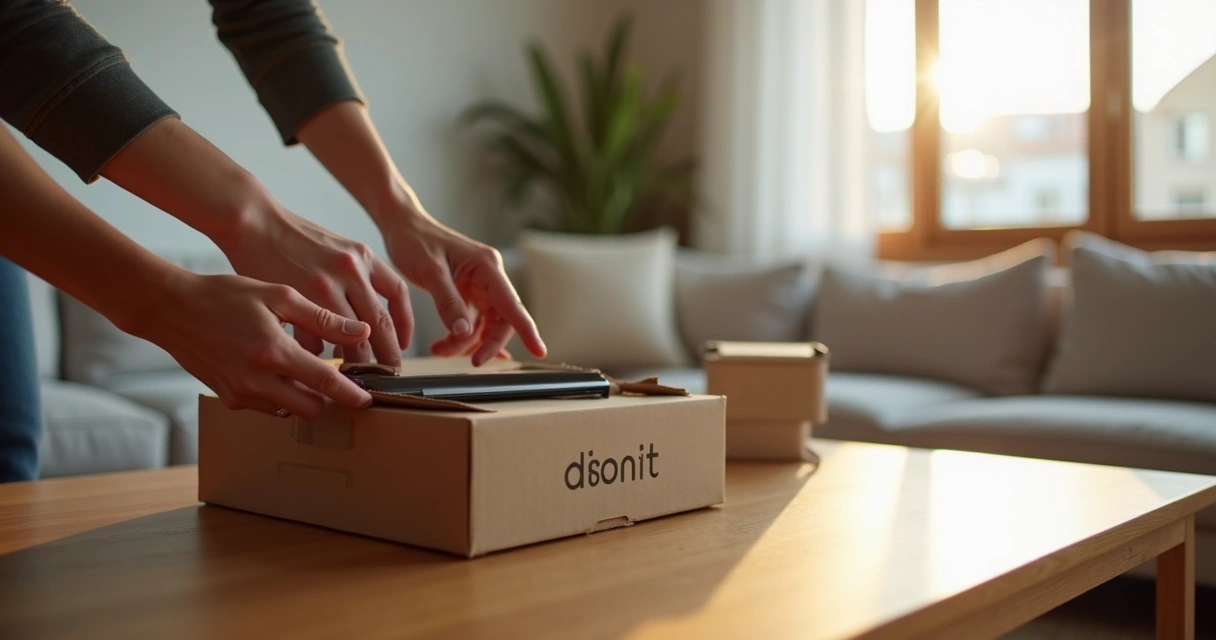
Before-and-after demonstrations
These show clear transformation—a classic structure for products that deliver visible change, such as in beauty, cleaning, home, or even fitness. Right away, viewers see proof. The quick cut from "before" to "after" doesn’t require anyone to take your word for it: the results are on screen.
Step-by-step tutorials
Instructional videos walk viewers through using your product. Maybe it’s a tech gadget setup, a skincare routine, or an assembly process. The approachable format means buyers feel less intimidated, more confident to buy, and more likely to get actual value from what you offer.
Testimonials and personal stories
Slightly more structured than a review. These focus on how the product fits into the creator’s life. The story can be emotional, funny, or inspiring. No matter what, it’s about putting a face and voice to the experience.

How to encourage and collect UGC video from customers
Getting real customers to create and share video content isn’t always automatic. Most people need a little push, and sometimes, a clear explanation of what to do. Here are some well-tested strategies brands and agencies use to get high-quality UGC video for their campaigns:
Run social media campaigns and contests
- Challenges: Invite followers to join a simple video challenge ("Show us your #MorningRoutine with our product and tag us!"). Hashtags help collect entries and boost reach.
- Contests: Offer a reward—discount, free product, gift card. The prize doesn’t need to be huge; recognition is often enough as well. Just keep the rules clear and the entry process simple.
- Branded campaigns: Share UGC submissions in your Stories or Reels, highlighting your customers to the whole community. Public recognition encourages others.
Offer clear briefs and guidance
Many great potential creators freeze up because they aren’t sure what you want. A brief template—what you’d like shown, video length, orientation, topics to touch on—removes guesswork. Don’t script it, or you’ll lose the 'real person' feeling, but do offer guardrails.
- Be specific: Example: "We’d love to see a 30-second video of you unboxing your new product, showing the packaging and sharing your first impression."
- Share sample videos: Offer examples (maybe from the last campaign) to lower fear and explain standards.
Make participation easy
- Submission portals: Create simple forms or use DMs to collect content. The less friction, the better.
- Tech solutions: Platforms like Automads support instant creation and sharing, especially for teams juggling many submissions. Automation here is a time-saver.
- Response incentives: Reward every good submission with a thank you, social shout-out, or coupon.
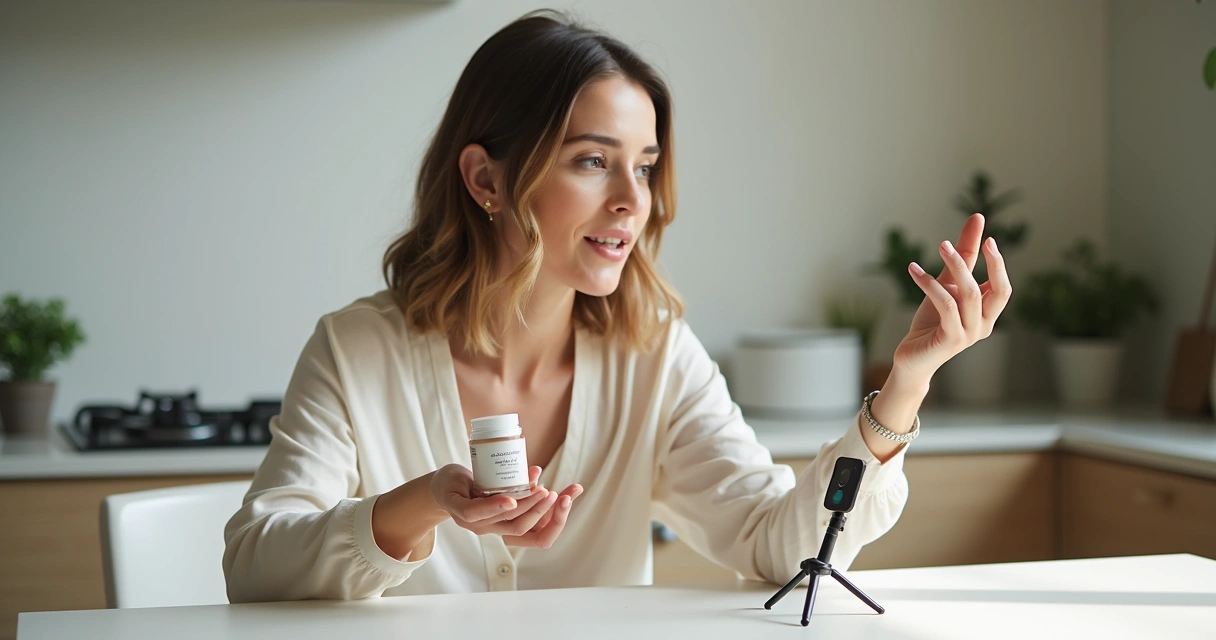
Build community—slow and steady
The best brands don’t just appear when they want content. They’re present all year, answering questions, featuring customer stories, responding to comments. It might seem time-intensive, but the long-term result is priceless: a steady flow of authentic brand advocates who want to be part of your story.
Legal and ethical considerations: keep it all above board
Using customer-created videos in your ads isn’t as simple as pressing “share.” Brands need to protect themselves and show respect to the original creators.
- Get explicit permission before using any UGC in your marketing—even if the creator tagged your brand.
- Written consent is best. A simple message reply (“Yes, you can use my video”) is better than nothing, but a formal agreement is safest, especially for paid ads.
- Give credit where appropriate. Some creators expect a tag, mention, or even a link to their social account. If you promised recognition, you have to deliver.
- Be transparent about any rewards, payments, or incentives. Regulations in many countries require disclosure if a video was paid for, or if a free product influenced the review. Don’t risk your brand’s reputation over a technicality.
- Keep data private. If you collect videos, ensure you follow reasonable privacy practices. Don’t reveal names or personal details unless you have clear, specific permission.
Respect creators and they’ll keep creating.
If you’re working with minors, or in regulated industries (health, finance), legal review is not negotiable. Take a cautious approach; it pays off in the long run. If unsure, consult a specialist.
Best practices for integrating UGC video into ad campaigns
So, you’ve got customer-created videos. How do you get the most out of them in your advertising?
Fit content to the platform
- Meta Ads (Facebook & Instagram): Short videos—under 60 seconds—work best. Use vertical or square formats. Include captions for sound-off viewing and avoid too many overlays.
- Instagram Stories & Reels: Vertical aspect, energetic pacing, and big on-screen text. Stories are short-lived, so repeat the message with variations.
- TikTok: Lean into trends, popular audio, and friendly editing. Relatable, informal content is gold here—don’t overthink or over-edit.
- Ecommerce sites: Embed UGC clips beside product info. Shoppers want to see real people using the product before they buy—sometimes more than technical specs.
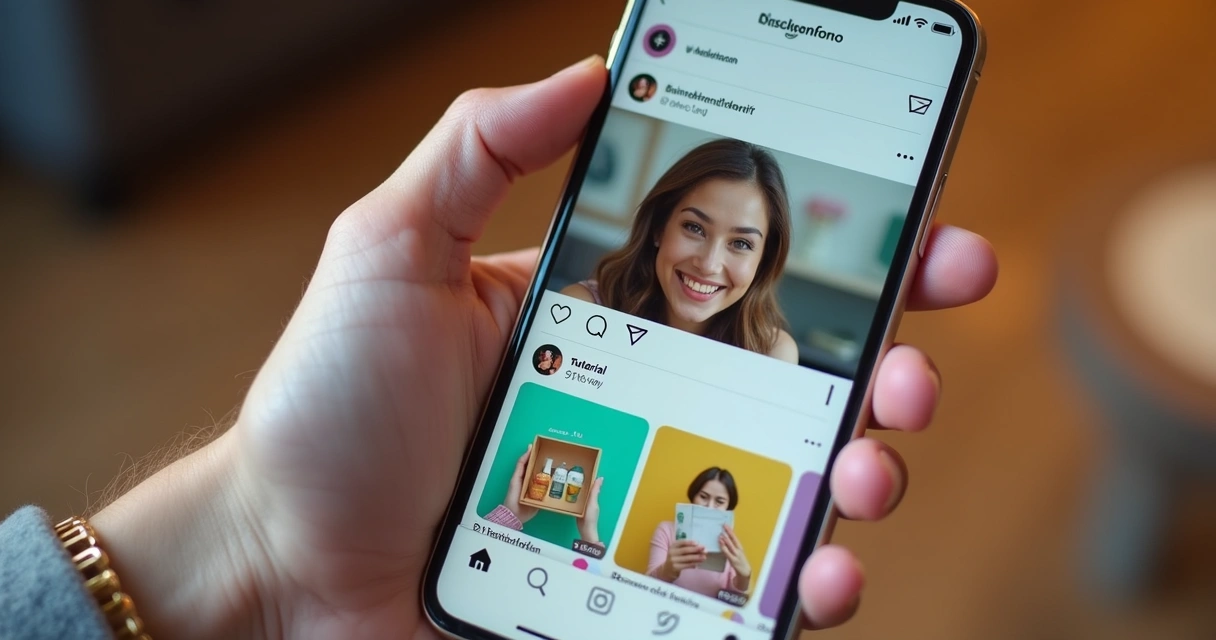
Keep things diverse and fresh
- Rotate different types of UGC videos: unboxing, tutorial, review, even blooper reels.
- Mix up your creators: different accents, ages, lifestyles. The more relatable faces you show, the more segments you’ll reach.
- Regularly update your UGC content. Audiences tune out "stale" stories. With tools like Automads, generating new versions or edits is quick and systematic, eliminating the old excuse of “no time.”
Don’t forget a strong hook
The first three seconds make all the difference. Have your creator get straight to the point. A bold claim, a quirky question, or the payoff shot (the “after” in a demo) should hit right away—otherwise, people scroll past.
Start strong. Or vanish in the feed.
Optimize for sound-off viewing
- Add captions or on-screen text for every UGC video. More than half of viewers won’t turn the sound on, especially while commuting or at work.
- Use expressive gestures and facial cues that make sense even muted. Animation or text overlays help too.
Pair with strong copy and call to action
A UGC video isn’t a replacement for a good ad. Make sure you match it with clear headlines, concise body copy, and a call to action: “Shop now,” “See more,” “Try for free”—whatever matches your campaign goals. AI-powered tools (like Automads) help you auto-generate copy at scale, keeping your messaging on-brand and aligned across dozens of ad variations.
Analyze and improve
- Track which UGC clips draw the most views, clicks, and conversions. Don’t just look at 'likes.' What actually pushes people to purchase?
- Test different formats, creators, and hooks. Social platforms make it easy to A/B test in a real-world environment.
- Ask your community for feedback. Which videos do they like? Why?
- Refine your brief for future creators based on real results—not gut feeling.
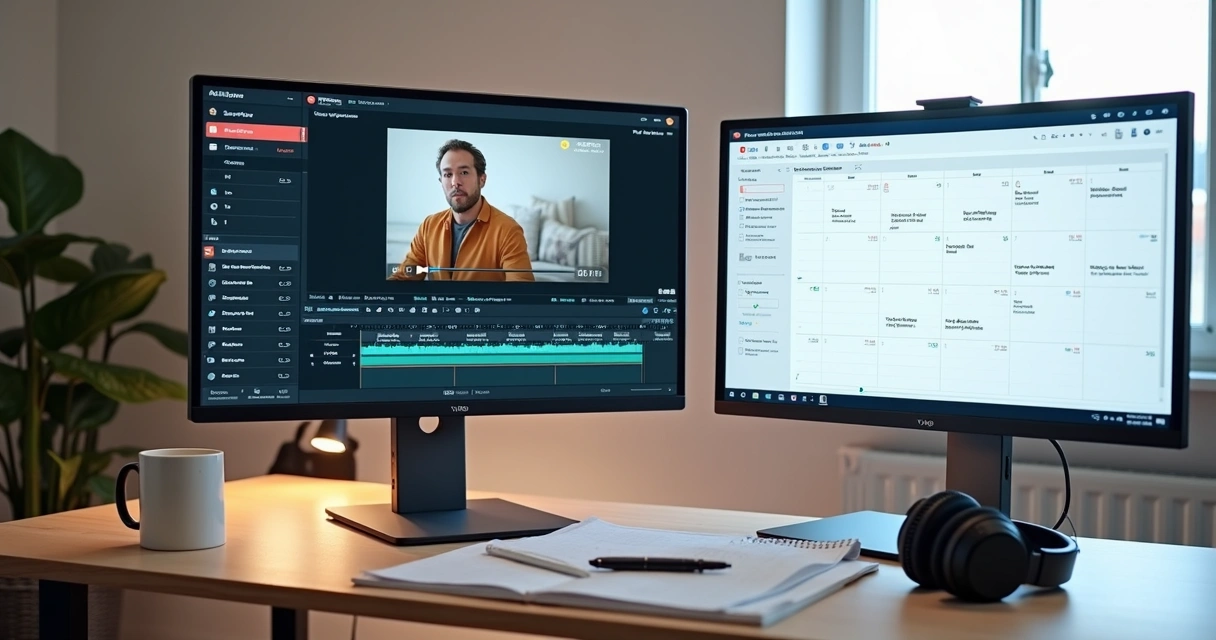
Building your own UGC video pipeline
If this is your first time setting up a UGC campaign, you'll want a workflow that won’t overwhelm you or creators. Here’s a practical roadmap, built from real-world experience—adapt as needed.
- Set clear campaign goals. Decide what you’re trying to achieve. Is it awareness, product launch, reviews, retargeting? This determines the kind of UGC content you need.
- Create a simple brief and FAQ. Limit instructions to bullet points. Tell creators the main message, suggested structure, preferred length, and file format. Include a FAQ answering common worries (privacy, payment, deadlines).
- Choose your collection method. DM, email, submission form, or a dashboard like Automads for managing and organizing incoming videos.
- Promote participation widely. Share across all your channels. Remind your email list, put a banner on your site, nudge loyal customers in post-purchase emails.
- Review and curate videos. Make sure content is clear, legally usable, and delivers the desired message. Edit only for clarity—not to script the authenticity out.
- Edit and repackage for channels. Cut for different lengths, add captions, maybe tweak color or apply brand overlays. Match format to the platform: vertical, square, horizontal—the works.
- Schedule and track performance. Use analytics to monitor results. Tag each creative for easy reporting: which creator, what type, what hook.
- Follow up with participants. Thank your creators, feature them, and let them know how the video did. Goodwill goes a long way in keeping the UGC pipeline flowing.
The role of technology: how Automads makes things easier
At every stage—briefing, collecting, editing, deploying—manual processes slow teams down. That’s why smart marketers rely on tools that automate or streamline the UGC workflow. Automads, for instance, enables instant AI-powered creation of ad creatives at scale, letting you generate versions for every campaign, optimize for different platforms, and maintain sharp consistency with your brand look and message.
This isn’t just about speed. When testing dozens (or hundreds) of creative combinations, you’ll find the winning formula faster and keep your campaigns feeling fresh, not repetitive.
Subtle details: what separates good UGC from great
Sometimes the difference between an average UGC ad and one that truly performs is subtle. Things that matter, but not everyone thinks about at first:
- Lighting matters more than you think. Natural daylight is best—avoid harsh overheads or dim rooms.
- Audio clarity boosts credibility. If viewers can’t understand what’s said, they won’t stick around. Even simple external mics transform quality.
- Background tells a story too. Cluttered, messy, or brand-inappropriate scenes distract. Clean, relatable spaces work best—think kitchen table, home office, or relevant outdoor setting.
- Keep it to the point. Resist the temptation to turn every video into a mini-movie. Most winning ads are 30-45 seconds, tops.
- Encourage some energy. Flat videos never do as well. Ask your creators to amp up enthusiasm a notch. It feels a bit strange on camera, but pops on social feeds.
Small tweaks bring big results.
Mistakes to avoid when using UGC video
It’s tempting to just post every customer video you receive, but not every clip works for every brand. A quick checklist of mistakes you can dodge:
- Over-editing: Removing all "realness" makes UGC blend in with regular ads. Leave in imperfect speech, spontaneous smiles, playful pets in the background.
- Skipping legal steps: Using someone’s likeness or content without permission is risky. Get that sign-off.
- Ignoring performance data: Run the ad for a week or two, then review the actual numbers. Stop what’s not working, double down on what resonates.
- Not crediting creators as promised: The fastest way to a PR mess is ignoring contributors. Keep your word.
- One-size-fits-all repurposing: Don’t assume a TikTok UGC video will work as-is on your product landing page. Always tweak for the channel and objective.
Case example: the transformation of a tired campaign
There’s a timeless story that plays out in every agency or in-house marketing department. A product launches with a slick, expensive brand video. Clicks spike. Sales pick up. Then—days later—numbers flatline. The audience tunes out the fancy footage. What saved the campaign? UGC video. Suddenly, everyday customers started posting reviews and unboxing clips. The marketing team quickly curated and repurposed the best ones into paid ads across social networks. Engagement doubled. The comment section exploded with "I had the same experience!" Sales found new life.
Automation platforms like Automads made it possible to adapt and launch new ad creative instantly, matching the changing audience appetite. The lesson? Don’t neglect the raw, approachable content you can source from your most passionate users.
Conclusion
Video-centric UGC campaigns cut through the noise and win trust. The blend of authenticity, relatability, and real-world social proof makes this content hard to beat. Brands and agencies now see UGC video not as a side project, but as a central part of their social ad strategy. And when you add smart tech, such as Automads, you multiply your ability to create, test and keep your creative pipeline flowing—without breaking the bank or waiting weeks for an agency edit.
Start small: invite a handful of loyal customers to share their product stories on video. Learn from their feedback, refine your process, and scale what works. If you’re curious about making the UGC process easy, cost-effective, and perfectly on-brand, check out Automads. There’s no credit card needed to try—and every reason to give your campaigns that genuine edge.
Frequently asked questions about UGC video in social ads
What is a UGC video for ads?
A user-generated content (UGC) video for ads is a short, informal video clip created by real customers or brand fans. The person on camera usually shares an authentic review, demonstrates a product, or tells a personal story. Brands use these videos in their paid campaigns on platforms like Meta Ads, Instagram, or even their own websites. Because UGC videos come from genuine users—not professional actors—they are perceived as more trustworthy and relatable by viewers, helping drive engagement and purchasing decisions.
How to use UGC videos in social ads?
Brands use UGC videos in social ads by first curating quality content from actual customers, then adapting those clips for each advertising platform. The process usually involves reviewing submissions to ensure they match brand messaging and legal standards, editing for length and clarity, adding captions or overlays, and then running the videos as part of targeted ad campaigns. On platforms like Instagram, TikTok, or Facebook, UGC videos help humanize the brand and attract higher engagement, especially when the content is cut to the right lengths and formatted correctly. Technology, such as Automads, speeds up the workflow and maintains a consistent look across all channels.
Are UGC videos effective for advertising?
Yes, UGC videos are effective in advertising because they foster authenticity and trust. Studies and marketing feedback consistently show that real customer testimonials and relatable experiences drive higher interaction, longer watch times, and better conversion rates compared to traditional ads. The approachable nature of UGC video often results in more comments and shares, expanding organic reach. Many brands, including those using platforms like Automads, report that replacing or supplementing branded creative with UGC content leads to improved campaign ROI.
Where can I find good UGC creators?
Good UGC creators may be right in your existing customer base. Start by reaching out to satisfied buyers via email, social media, or after-purchase messages. Encourage submissions through hashtag campaigns, giveaways, or offering small incentives. Branded communities and social followings also harbor motivated creators—especially if you highlight their content in your feed or stories. For larger volume, some companies use specialized UGC creation platforms or partner with freelance creators. Regardless of your approach, providing clear guidance and recognizing contributors helps motivate ongoing participation.
What are the best tips for UGC ads?
- Offer clear, simple briefs so creators know what you need, but allow flexibility for authentic delivery.
- Make the submission process easy—DMs, online forms, or tools like Automads streamline workflow.
- Always obtain permission before using someone’s content in paid advertising.
- Edit for clarity but retain authenticity—don’t overproduce and lose the “real person” feeling.
- Add captions for mute viewing and optimize video aspect ratios for each social platform.
- Feature a variety of creators and video types to reach broader audiences.
- Monitor analytics and listen to feedback, then refine your approach for future campaigns.





